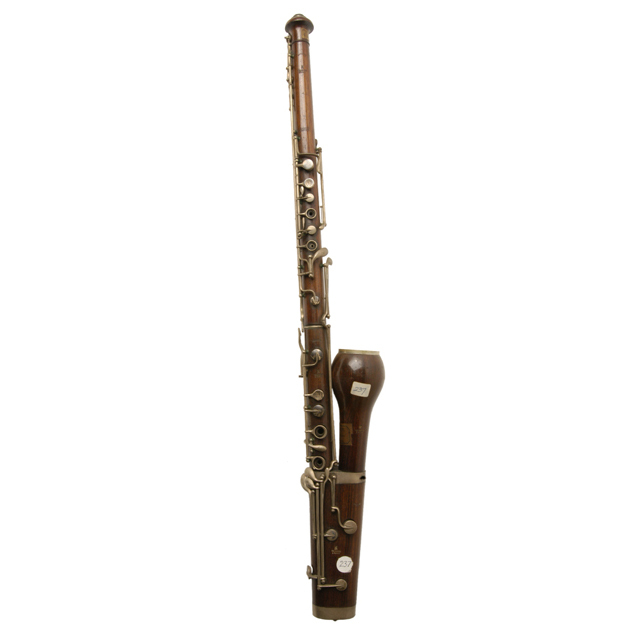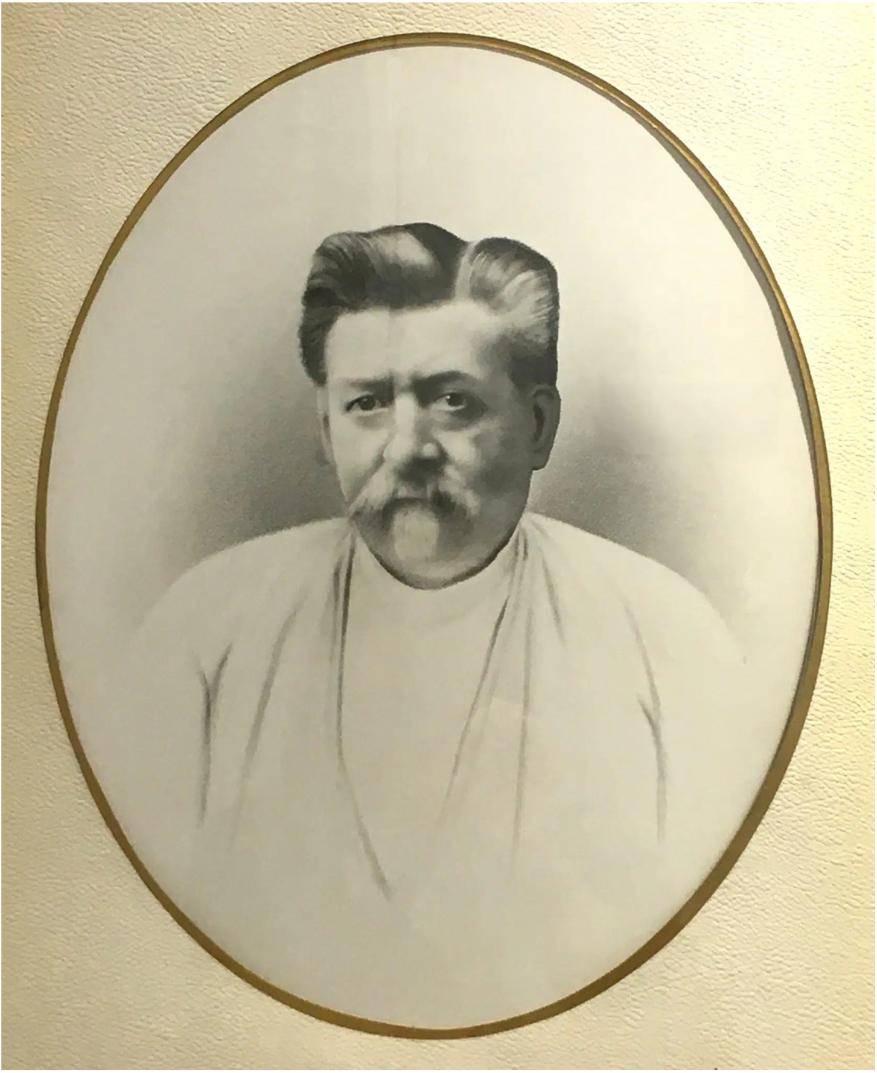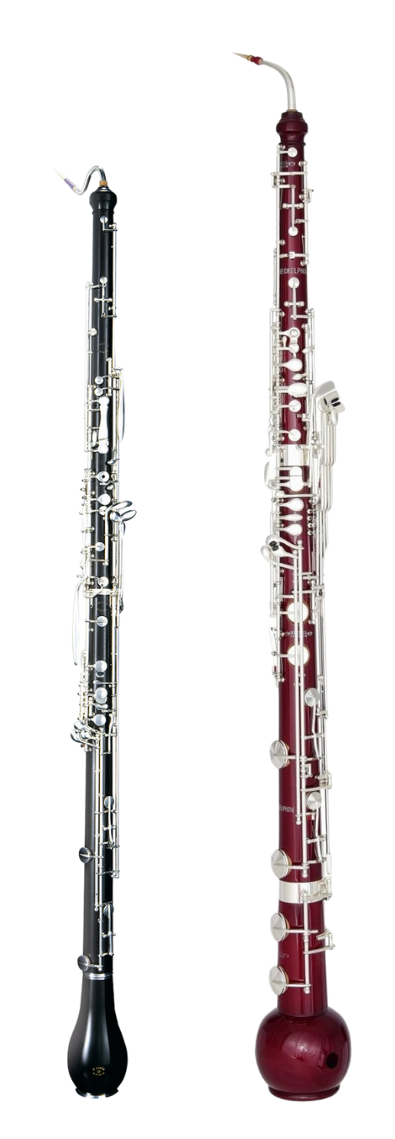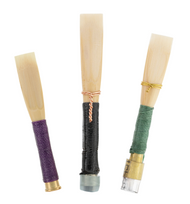A Brief History Of The Lower Oboes: Chapter Three, Bass Oboe
Posted by Clair Cangialosi, DMA on Oct 21st 2025
Table of Contents:
- Introduction and Early Music
- Nineteenth Century
- Twentieth Century & Modern Usage
- Other Bass/Baritone Low Reeds
- Conclusion
- End Notes
Introduction and Early Music
The final chapter of this series will explore the bass oboe. Chapter 1 covered the oboe d'amore, and chapter 2 covered the english horn.
The bass oboe as we know it today is pitched in C, one octave below the soprano oboe (see figure 1, right).This instrument is also sometimes referred to as the baritone oboe because its range resembles that of a baritone singer. The bass oboe has the most sporadic usage throughout history of the lower oboe family instruments.
Similarly to its smaller siblings, the bass oboe was developed gradually from the bass shawm during the late seventeenth century. In the video below, music historian David Munrow demonstrates the bass shawm. Notice how the sound is very similar to that of a baroque bassoon.

There are very few bass oboes that have survived from the 18th century (there are records of instruments held in various museums in Europe, but no photos were available at the time of writing). These early instruments were not often called for by composers since the bassoon could be used to fill the same role. There is no surviving music from this time period that specifically mentions the bass oboe, although it may have been used in wind chamber ensembles. (1) The instrument disappeared from use during the classical period.
Nineteenth Century

Another attempt at creating a usable bass oboe was made by Parisian instrument maker, Guillaume Triébert in 1825. This instrument had added keys (analogous to oboe keywork at the time) and a bulb bell. The bottom of the bore was also folded upwards, presumably to help bring the toneholes more easily in reach for the player. Triebert’s bass oboe was designed for Gustave Vogt, oboe professor at the Paris Conservatory at that time. His instrument is held in the French National Collection (Cité de la Musique) in Paris (see figure 2, left). (2)
Another French instrument maker, Henri Brod (whose claim to fame was building the first straight English horn), was also making bass oboes during the first half of the nineteenth century. He introduced his model in 1839, winning an award from the Exposition des Produits de l’Industrie Française (Exhibits of Products of French Industry) shortly before his untimely death that same year. His innovations to the instrument were eventually adopted by German instrument makers in the development of the Heckelphone (more about this below). (3)
In 1878, the Triébert firm was taken over by François Lorée (figure 3, right), who resumed manufacturing bass oboes- with a straight bore and a bulb bell like an English horn, and eventually the full conservatoire key system. These improvements helped the instrument slowly gain some traction in orchestral repertoire. (4)

Twentieth Century and Modern Usage
Although the bass oboe is not used as frequently as its smaller siblings, there are a handful of orchestral pieces, chamber works, and solos featuring the instrument from the 20th and 21st centuries.
Gustav Holst wrote a prominent solo for bass oboe in Saturn, Bringer of Old Age, the fifth movement from his 1914 orchestral suite, The Planets, op. 32. (the solo starts at 1:30)
The longest solo for bass oboe in the orchestral repertoire is found in Percy Grainger’s “The Warriors” (1916)
One of the only known concertos for the instrument at the time of writing is the Concerto for Bass Oboe, by Canadian composer Christopher Tyler Nickel (2016).
Other Bass/Baritone Double Reeds
The Heckelphone
Widespread use of the bass oboe was somewhat hindered by the invention of the heckelphone in 1904. Although the instruments appear to be similar, (and do cover a similar range), the heckelphone has a wider bore and larger toneholes, which gives it a distinctly different tone quality than the bass oboe. Despite these differences, the two instruments have often been conflated, or even used interchangeably. Figure three (right) shows a comparison of the two instruments. The bass oboe and Heckelphone can be heard together in the video below, "The Death of Myrddin" by Bret Newton (2019).

The Lupophone
The Lupophone is another extremely rare instrument, developed by Guntram Wolf in Germany around the turn of the 20th century. The lupophone’s range descends to an F2 (at the bottom of bass clef), while the bass oboe and heckelphone’s lowest notes are a B2 and A2, respectively. As noted in the following video, this lower extension is useful for covering the full written range of the heckelphone part in Richard Strauss’ Alpine Symphony, which dips down to a written G3 (sounding G2).
Conclusion
We’d like to close off this series with what is perhaps the most whimsical usage of the bass oboe: a cover of Meghan Tainer’s All About That Bass, entitled All About That Bass Oboe, recorded in 2015 by oboist Phil Popham.
We at Hodge products certainly are “all about that bass oboe,” and after reading this post, we hope you are too! If you do ever have the opportunity to play one of these incredible instruments, rest assured that we’ve got everything you need- from various bass oboe products to heckelphone reeds.
Questions? Contact us through our website. We’re happy to help!
Go to Intro
Go to Chapter 1
Go to Chapter 2
End Notes
- Munrow, David. “The Reed Instruments,” from Early Musical Instruments (UKTV, 1976). Posted to Youtube on September 6. 2022. https://www.youtube.com/watch?v=cLVPhg978V4&list=RDcLVPhg978V4&start_radio=1
- inkelman, Michael. “Oboe, III. Larger and Smaller European Oboes, 5. Bass Oboe and larger forms, (i.) Bass oboe” Grove Music Online. 2001.
- Finkelman, Michael. “The Lower Oboes: Genesis and Development, The Bass Oboe.” unpublished manuscript, 2022, typescript, 2.
- Henri Brod (1739-1838). The Balthazar Ensemble. Accessed August 28th 2025. http://www.balthazarensemble.com/Do/composer/5/View.html
- Finkelman, Michael. “The Lower Oboes: Genesis and Development, The Bass Oboe.” unpublished manuscript, 2022, typescript, 2.
- Holst, Gustav. The Planets, movement five: Saturn, the Bringer of Old Age. Performed by The BBC Symphony Orchestra, July 27, 2015. Youtube. https://www.youtube.com/watch?v=OYPg8H5LtCI
- Grainger, Percy. The Warriors. Performed by the Melbourne Symphony Orchestra, 1990. Youtube. https://www.youtube.com/watch?v=jwu8WS5MAvA&t=321s
- Newton, Brett. The Death of Myrrdin. Performed by Mikey Sluman, Bass Oboe; John McDougall, Heckelphone; David Baker, Bassoon. October 13th, 2019. Youtube. https://www.youtube.com/watch?v=2EUUCpBlmGc
- “Lupophone, The World’s Largest Oboe.” Posted by Score Circuit. January 4th, 2025. Youtube. https://www.youtube.com/watch?v=ihat57pZqP4&t=56s
- Popham, Phil. All About That Bass Oboe. Recorded June 2, 2015. Youtube. https://www.youtube.com/watch?v=FQvIU9sC5aE&list=RDFQvIU9sC5aE&start_radio=1

